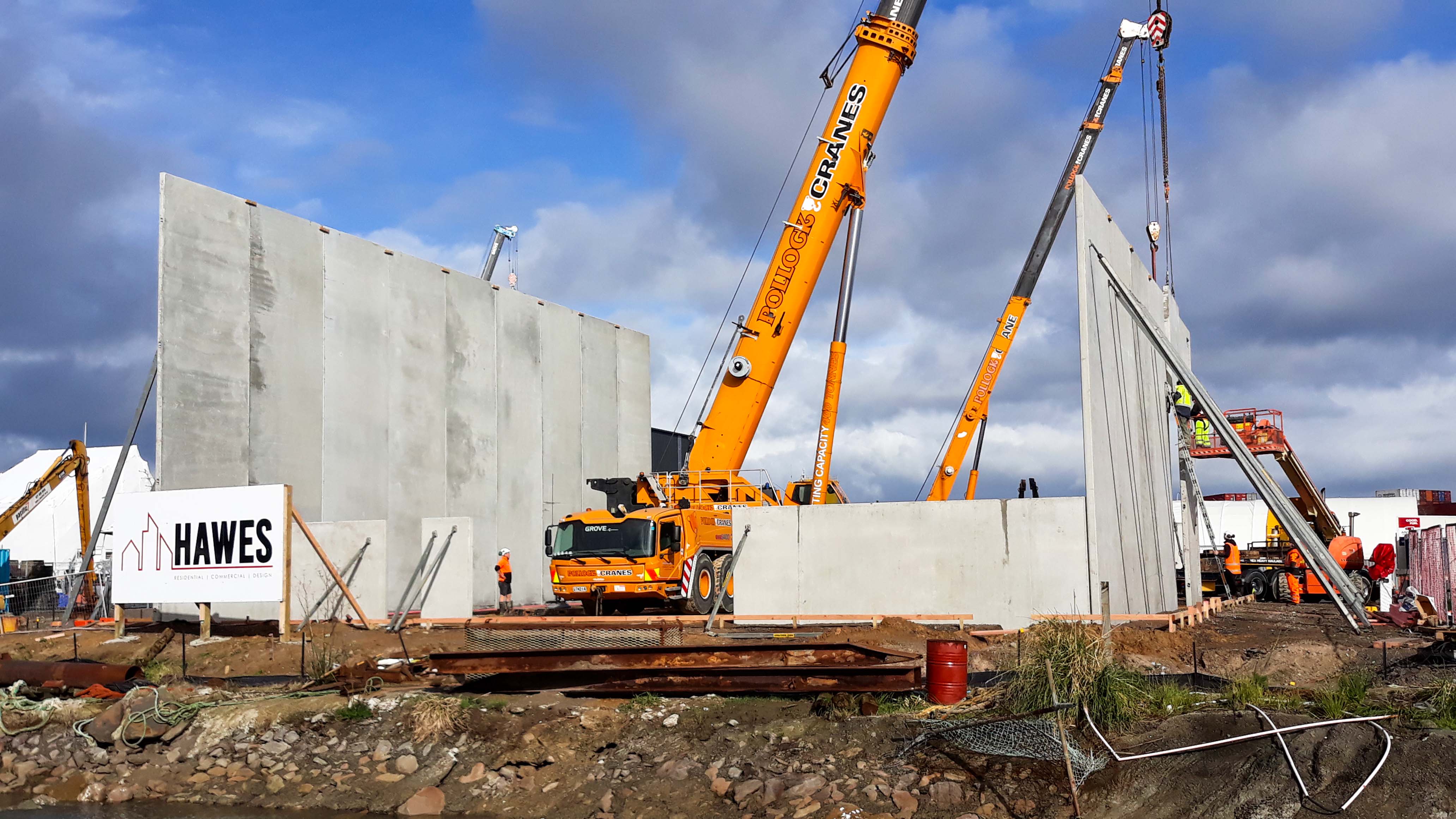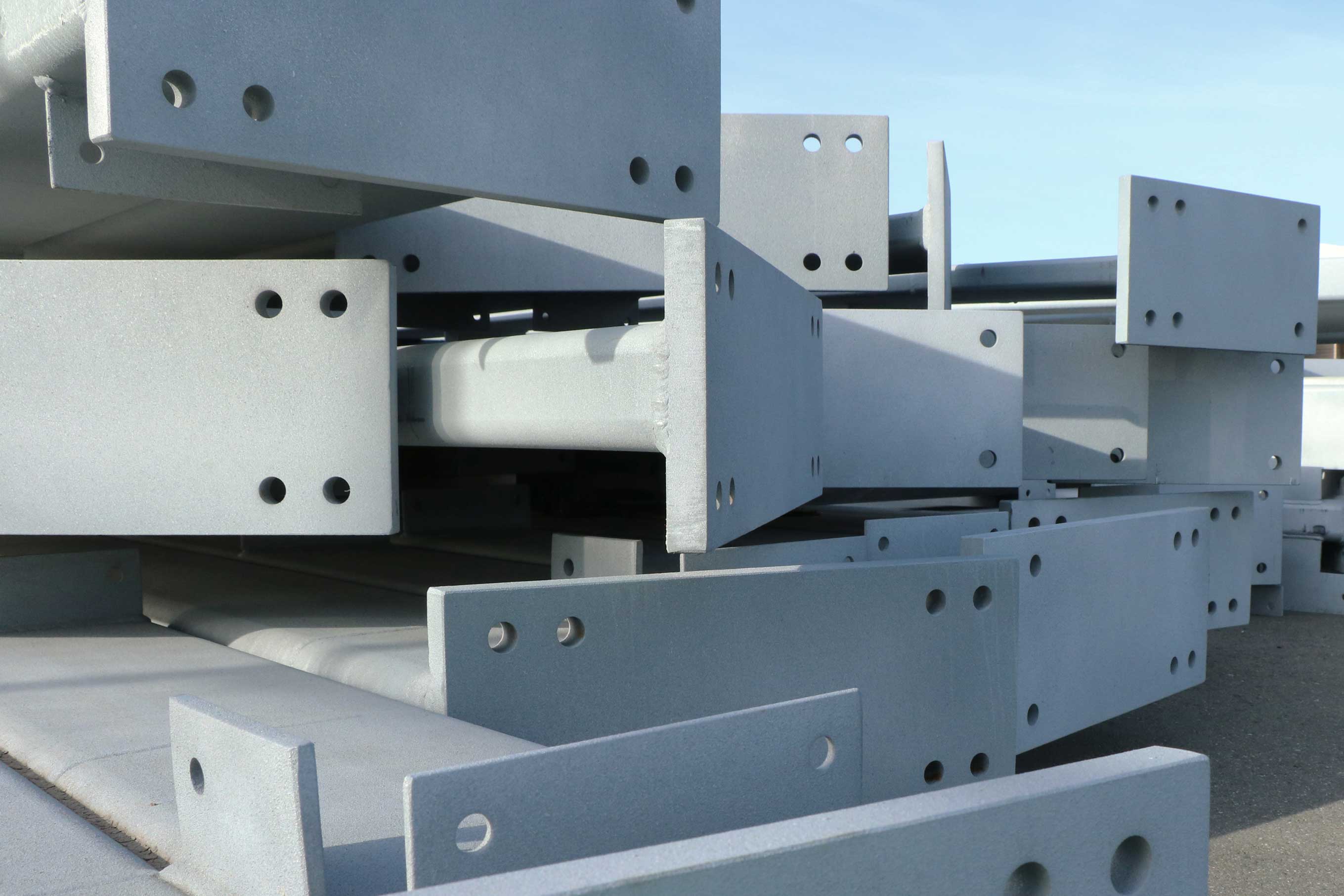Protective Coatings and Paint finishes for Structural steel buildings
Steel is one of the most used materials for industrial buildings throughout New Zealand. However, steel is also prone to rust in almost any environment especially when used in corrosive environments or exposed to harsh conditions.
To protect your building from rust and corrosion and to meet compliance regulations, most building structures require protective coatings. Knowing which protective coating will best suit your building location and operation is important to extend the lifetime of your new building.
Here we explore several protective coating options for structural steel buildings and outline the advantages and recommended application for each.
Hot dip galvaniSing
The hot dip galvanising process is relatively simple, it involves cleaning steel and immersing it in molten zinc to obtain a coating. During the process, a metallurgically bonded coating is formed which protects the steel from harsh environments, whether they be external or internal. Hot dip galvanised steel can be identified by the crystallised pattern on the surface.
“Hot dip galvanised” finish should not be confused with “galvanised” finish that is used on roll-formed steel as hot dip galvanised steel has a far thicker coating and produces a much more durable and rigid result.
| Pros of hot dip galvanising | Cons of hot dip galvanising |
|
|
|
|
|
The best application for hot dip galvanising would be for smaller span buildings (typically less than 18m spans) in high corrosion areas such as near the coastline. Alpine Buildings use this coating successfully on the clearspan rafters of their pole shed designs.
Hot zinc arc spray finish is an alternative method of applying a zinc protective coating instead of hot dip galvanising. It has the advantage of being able to be applied to long structural members much larger than can fit in a hot dip galvanising bath. The coating thickness can also be varied to suit the end use.
Zinc arc spraying process
This process involves the zinc wire being heated to the point it atomises with either very high voltage electricity or a focused oxy-acetylene flame jet and blasted with high-pressure air onto the prepared steel surface. After this, the build thickness of the zinc coating is tested to ensure the required durability will be achieved. It is common for this to be left as is but can also be overcoated with a variety of finishes such as paint.
| Pros of zinc arc spraying | Cons of zinc arc spraying |
|
|
|
Paint Primer coat
It is common practice for a number of structural steel building suppliers to provide only a paint primer coat to the structural steel work. This finish can be adequate for enclosed buildings in low corrosion environments however it will fade quickly and tends to scuff, mark and scrape. It will also need maintenance throughout the lifespan of the building.
| Pros of paint primer coat | Cons of paint primer coat |
|
|
|
|
|
Paint finish
A step towards a more durable protection layer from paint primer is paint finish. There are hundreds of options that we can specify depending on variables like the location or use, etc. However, our paint of choice is Carboquick 200.
Carboquick 200 is a fast cure, high build polyaspartic coating and provides excellent corrosion protection as well as long-term weatherability. This can be applied directly to steel in various thicknesses depending on the application. 100 microns is a common thickness, however, it can be increased to suit the environment. The Carboquick 200 finish can be partnered with a CarboZinc/Epoxy coating to achieve an even better protective coating.
| Pros of paint finishing | Cons of paint finishing |
|
|
|
|
|
|
|
|
|
|
|
Steel is an incredibly strong and durable material, hence why it is so popular in commercial builds. With the right level of protection, your next structural steel building will be incredibly rigid and will last for many years to come, regardless of any outside factors.
Here at XL Structural, we offer the three most durable coating options - hot-dip galvanised, hot zinc spray, and paint finish depending on your location and budget. To learn more about our protective coating options talk to our team today.



